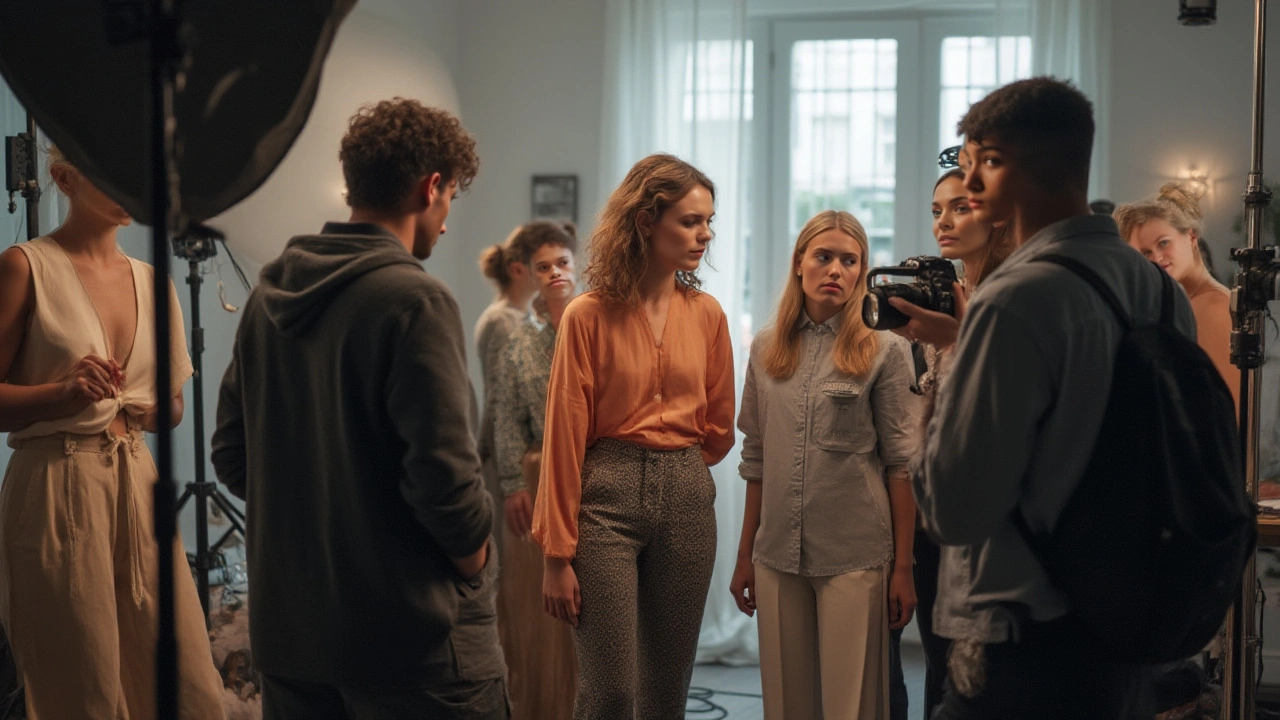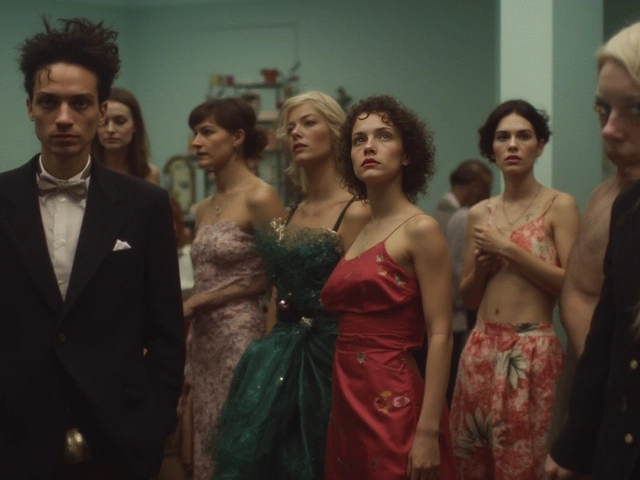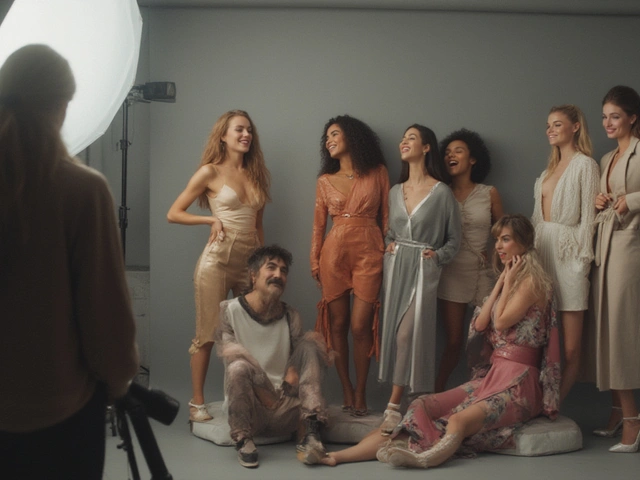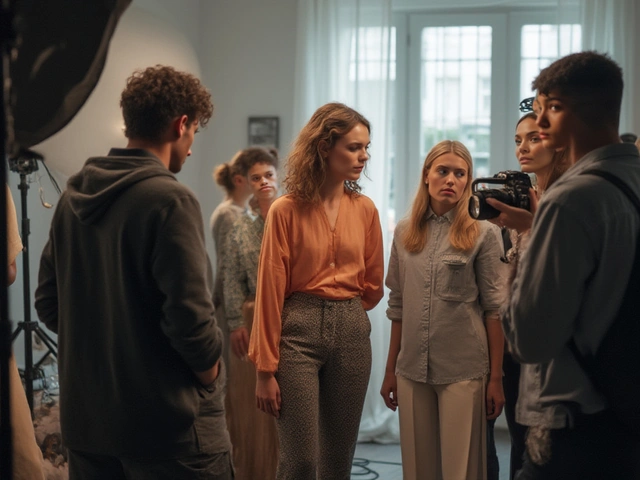Ever glanced at a “bad” modeling photo and thought, How did this happen with professionals? The answer’s usually not what you’d expect—a lot of common mistakes sneak in even when top models and experienced photographers work together. Little oversights in planning, communication, and mindset can turn your dream shoot into a disappointment. Nobody wants that. The good news is, most of these problems are totally avoidable once you know what to look out for. I’ve seen sessions melt down over things you’d never think of until you’re staring at awkward poses, closed eyes, and wild wardrobe malfunctions. Why let simple fixes stand between you and your best-ever shots?
Preparation Fails That Set You Up for Disaster
Anyone can look like a goddess with the right preparation—but miss a step, and even the most photogenic face gets lost in a sea of problems. First up: restless nights. Lack of sleep shows. Puffy eyes and tired expressions? You can’t Photoshop energy back in. Don’t overdo caffeine or alcohol the night before. These bloated or jittery faces often top the “unusable” pile after shoots.
Next sabotage move: skipping meals or overindulging before call time. Models sometimes starve themselves, hoping to look slimmer. Instead, you show up weak, distracted, or with hollowed-out cheeks. Or, eat junk and risk a visibly upset stomach and lackluster skin. Stick to balanced meals and hydrate as if your paycheck depends on it. (Spoiler: it does.)
Wardrobe woes haunt even experienced models. Ever worn something that looked great in person but turned see-through with a flash? I have. Check outfits with your smartphone camera on flash mode at home. Bring extras—buttons pop, zips break, and nobody wants to see yesterday’s lunch on your shirt in high-res.
Makeup mismatches can mess up the slickest styling. Daylight and studio bulbs are different beasts. Test your lotion, foundation, and powder ahead of time under similar lighting. I learned this the hard way after discovering a “ghost” face from SPF 50 foundation under strobes. Speaking of ghosts, emergency kits are underrated: blots, wipes, safety pins, double-sided tape, a mini sewing kit. Little hiccups need quick fixes.
Ever showed up to a shoot without a clue about the mood or theme? You miss subtle cues, which messes up the whole story. Get as much info as you can: is it commercial, editorial, lifestyle? Ask for references. Create a mood board on Pinterest or your phone gallery to get your head in the game.
Some models arrive with no idea who’s on set. Found yourself calling the photographer by the wrong name? (Yes, it happens.) Google everyone, learn their faces. This builds trust and avoids awkward intros.
Lastly, don’t neglect your body. Stretch out, practice basic poses in the mirror, and sort hair and nails a day before. Tangles, chipped polish, and tight muscles all photobomb your best efforts. If you’re not moving well, or you get a headache from a too-tight bun, the lens will see it even if your friends don’t.
Wrong Communication Sinks Shoots Faster Than Bad Weather
Miscommunication eats up more modeling time than outfit changes. One big trap: not clarifying the shoot plan. Is this a “trade for print” collab or are you on a catwalk for pay? If the details aren’t spelled out before you arrive, expect confusion and awkwardness everywhere—from makeup to timing and payment.
It’s painfully common to skip going over what’s off-limits. Many assume “no nudity” is obvious. Don’t guess. Spell out your red lines. Want to avoid wearing fur, swimsuits, or certain colors? Bring it up early, in writing, not at the last moment. This heads off fights and makes you look professional to everyone on set.
When models show up late without a heads-up, everyone scrambles. This burns bridges for future jobs. Always, always confirm the time and address (people text the wrong day shockingly often). Share your ETA if you’re delayed. A quick call can salvage an entire session’s timeline.
Photography isn’t mind reading. Don’t just nod when the shooter runs through pose suggestions; ask for details. What expression works? Which side is best? How should you interact with props or other models? If you don’t “get it,” clarify before the shutter clicks. Uneasy poses and forced smiles ruin the vibe faster than anything.
Ignoring feedback is another silent killer. Good photographers give easy tips like, “Lift your chin,” or “Relax and breathe.” Panic sets in when directions get ignored or misunderstood, leading to awkward facial tension and stiffness. In one survey, 62% of portrait photographers rated miscommunication as their single biggest time-waster.
| Error Type | % Time Wasted |
|---|---|
| Lack of Direction | 41% |
| Poor Feedback Loop | 62% |
| Late Arrivals | 29% |
Best hack? Develop short signals—like touching your wrist to mean “change pose” or tapping a prop for “use this.” This saves time and helps everyone focus on making magic instead of decoding awkward hand signals and eye rolls.
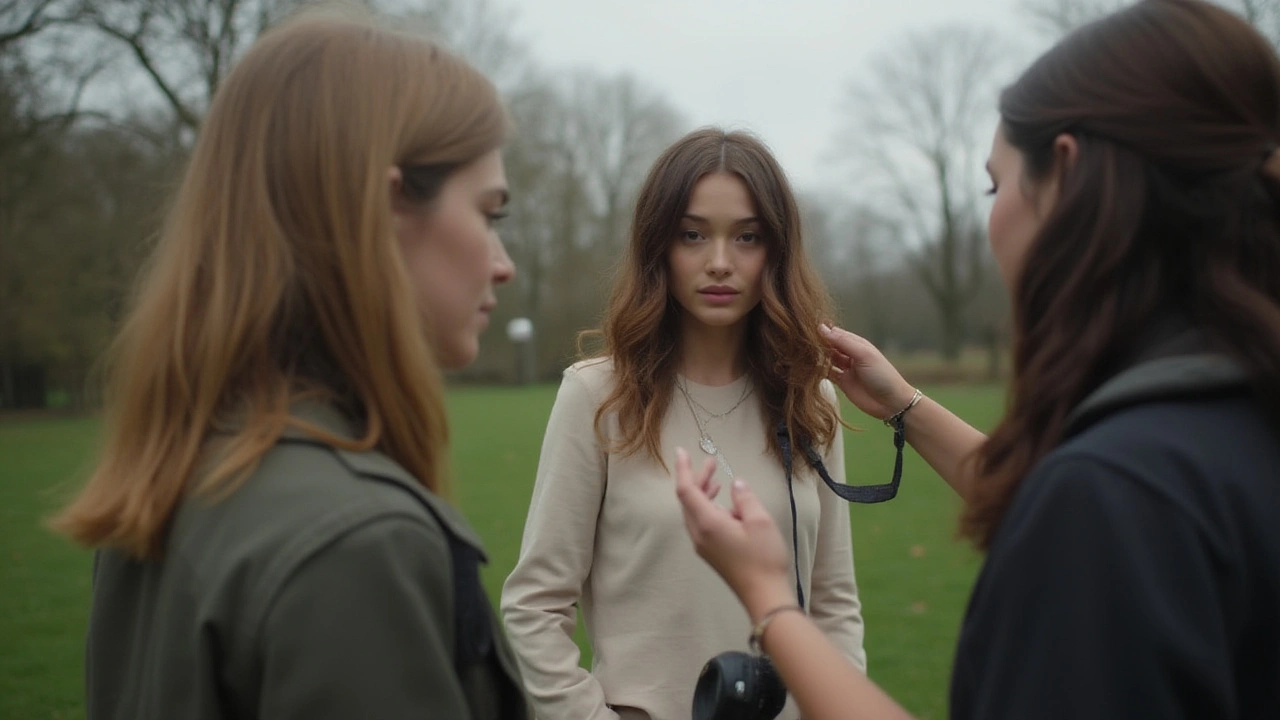
Technical Slip-Ups That Spoil Good Shots
Ever wonder why some shoots just don’t look right, even if you felt amazing doing them? You’re not alone. Technical hiccups can sabotage your work, no matter how “on” you feel. Lighting is the usual suspect. Natural sunlight brings logic and magic, but also shadows that can mess your entire look (hello, raccoon eyes). Don’t just trust the photographer—learn basic lighting. If a huge softbox emerges, expect fewer shadows and a more even look—as long as you’re positioned right. If the direct sun’s beating down, pose with your head slightly turned to avoid harsh light. Know how certain lights age or slim you—it’s the difference between “editorial goddess” and “goblin caught in headlights.”
Cameras are not as forgiving as bathroom mirrors. Ever stared at a photo, asking, “Is my nose really that big?” The answer is, wide-angle lenses exaggerate features. A true professional will never use them for close-ups, but always check what gear is being used. Politely ask for a preview if possible, especially if you’re unsure how a set-up affects you.
Mistakes pile up with poorly set props and backgrounds. A messy backdrop or weird angles distract from your face and outfit. If you spot trash or tangled wires in the frame, say something! The more you care, the better the final results.
Digital retouching can only do so much. It’s tempting to say, “They’ll fix it in post.” That’s like painting over cracked walls rather than fixing them. Plan as if every photo is the final product. Stray hair? Stop and fix. Visible bra straps? Tuck them in. Spend those extra seconds to avoid photo-ruining blips later. A surprising stat among professional retouchers: for every one minute spent fixing a shot before the shutter, it saves them 10 minutes in the editing booth.
Technology can also let you down. Never assume all batteries are charged or files will be safely transferred. Keep your phone off or in airplane mode. Imagine looking perfect—then the photographer’s phone buzzes with an email alert mid-shot, making everyone jumpy.
Shoes are sneaky saboteurs. Wrong heels throw your posture. If your feet hurt, you’ll start to grimace. Always break in new shoes, and bring flats for walking between locations—you’ll be grateful an hour in.
The biggest blunder? Skipping test shots. Good photographers snap a few testers to lock down lighting, exposure, and wardrobe. Don’t roll your eyes—these save you from 60 useless “almost” photos for every keeper. If test shots get skipped, insist on them before you dive in headfirst.
Mindset Traps That Kill Energy and Expression
You can nail every technical detail and still deliver flat, forgettable images if your head isn’t in the right place. Doubt creeps in when you compare yourself to others—“That model’s taller, skinnier, prettier,” etc. This echo chamber ruins performance. Only compare yourself to your last shoot, never to others around you. My partner Gareth once reminded me, “One person’s strength isn’t your weakness.” Corny but true.
Trying to please everyone—photographer, stylist, yourself—sucks away authenticity. You start giving bland, careful poses because you second-guess what’s wanted. Instead, talk openly before the camera clicks. If you’re uncomfortable, say so. It’s never “demanding” to ask for direction or clarity—it shows backbone.
Pressure to finish quickly can backfire. Rushing means you hold weird poses, forget to breathe, and look tense. Take breaks. Sip water. Force yourself to smile, laugh, or chat with others between shots. Sometimes the best photos drop during these “moments off.”
Many new models (and quite a few veterans, though they’ll never admit it) fall into the “pose prison”—robotically cycling through the handful of magazine looks they’ve memorized. Shake it up: walk, jump, turn, or play with nearby props. Bring an unexpected move; you’ll surprise yourself and the team. If you freeze, don’t panic. Micro-movements, like shifting a hand or tilting your head just a little, make everything more natural.
Ignoring the music or vibe kills spontaneity. Ask for music. It doesn’t matter if it’s cheesy or loud, rhythm brings out curiosity and better movement. If you sense tension on set, break the ice with a compliment or joke. This opens people up—and you’ll find better flow.
Finally, don’t be afraid to experiment. The best results don’t come from copying Pinterest shots—they’re when you stretch and create something weird and wonderful. Trust your instincts. There are no “wrong” moves, only ones you don’t commit to.
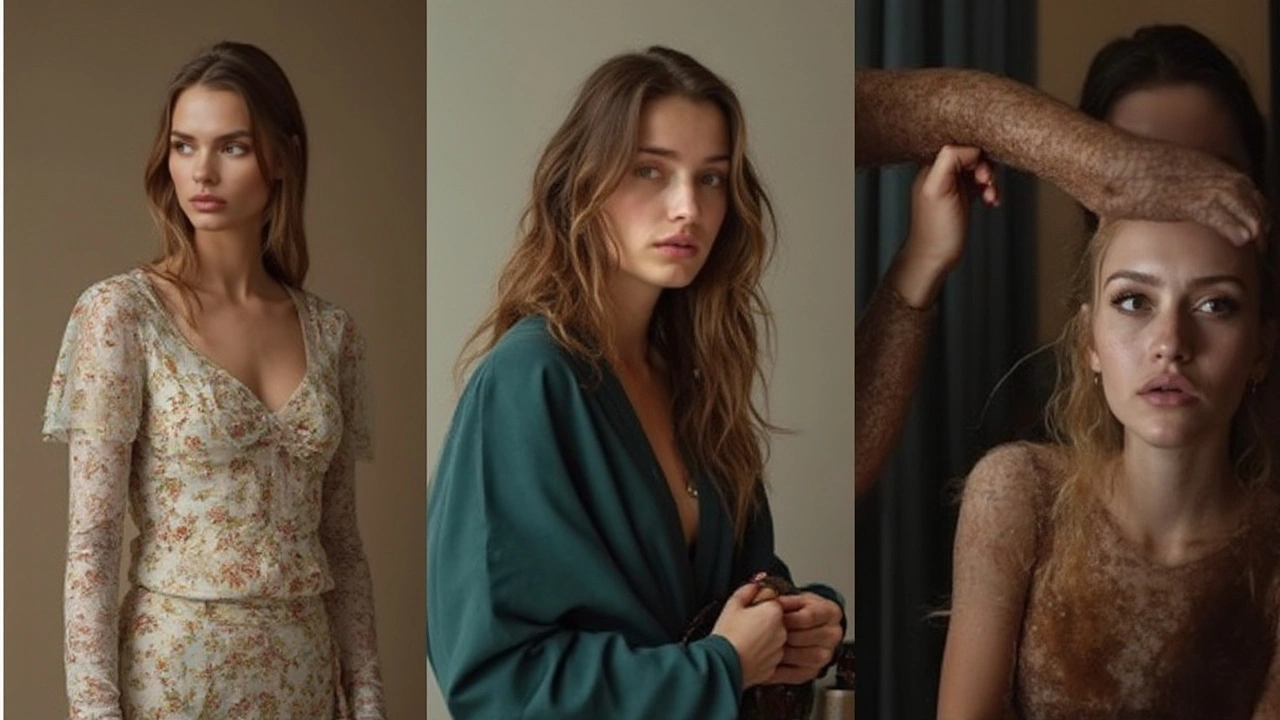
Turning Challenges into Perfect Results: Pro Tips and Must-Do’s
Getting perfect results isn’t about luck. It’s about learning from every hiccup and prepping like a pro, even if you’re brand new. Here’s how to dodge disaster on your next photoshoot (plus a few secrets I’ve picked up through trial and error):
- model photoshoot mistakes are easiest to avoid with a checklist. Print one before every job, and actually use it. Pack outfits, shoes, beauty items, and emergency fixes (that sewing kit, for sure).
- Communicate with everyone ahead of time. Confirm wardrobe, vibe, timing, and everyone’s expectations in writing. Bring reference pictures to keep everyone on the same page—literally show them what you mean.
- Hydrate and eat clean before shoots. Water brightens eyes and skin, keeps energy up, and helps you last through long days in tough lighting and tight shoes.
- Offer input during test shots. If you spot wrinkles, weird faces, or wardrobe issues, call them out kindly. You’ll save everyone work later—and look more invested in teamwork.
- Stick to your limits. Bring up anything that feels wrong in the moment, and hold the line firmly but politely. If you’re pressured to do “just one more” risky pose, stay strong—it builds respect.
- Smile and live in the moment. When you’re having fun, the camera always sees it, even if you’re not smiling. Breathe, move, and don’t overthink every limb or hair strand.
- Use a table (like below) to keep track of packing essentials:
| Category | Must-Haves |
|---|---|
| Wardrobe | Multiple outfits, shoes, backup accessories |
| Beauty | Makeup, remover, wipes, hairbrush, hair ties |
| Emergency | Safety pins, double-sided tape, sewing kit, painkillers |
| Hydration | Water bottle, snacks, straw (lipstick saver!) |
| Tech | Charged phone, backup charger, Bluetooth music speaker |
Each photoshoot is its own tiny universe with unique quirks and disasters waiting to happen. Every mistake is a lesson for next time, and the difference between “decent” and “wow” is almost always preparation and attitude. Keep your cool, learn as you go, and remember: the most unforgettable photos usually come when you’re least worried about perfection.
